INDIVIDUAL FILTERS
Testing the effectiveness of Calcium Chloride and Silica Gel in reducing humidity
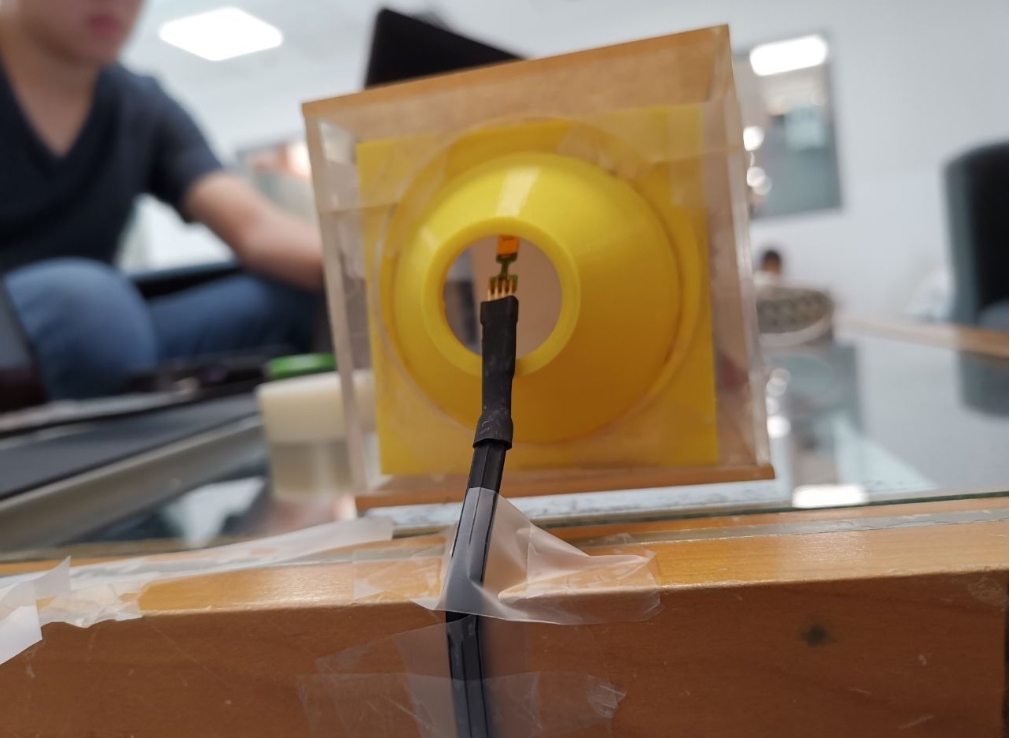
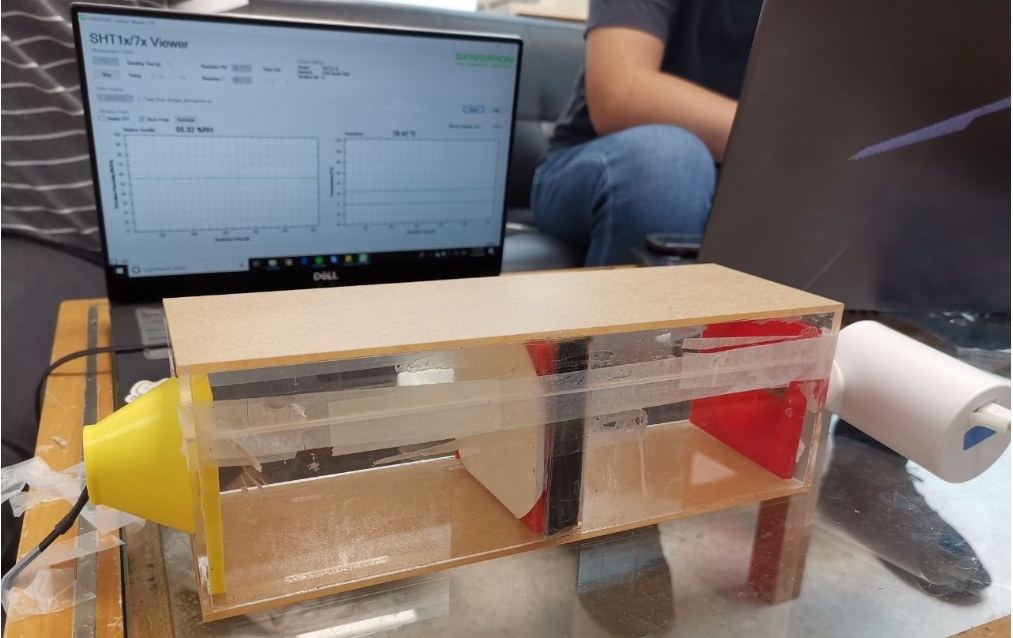
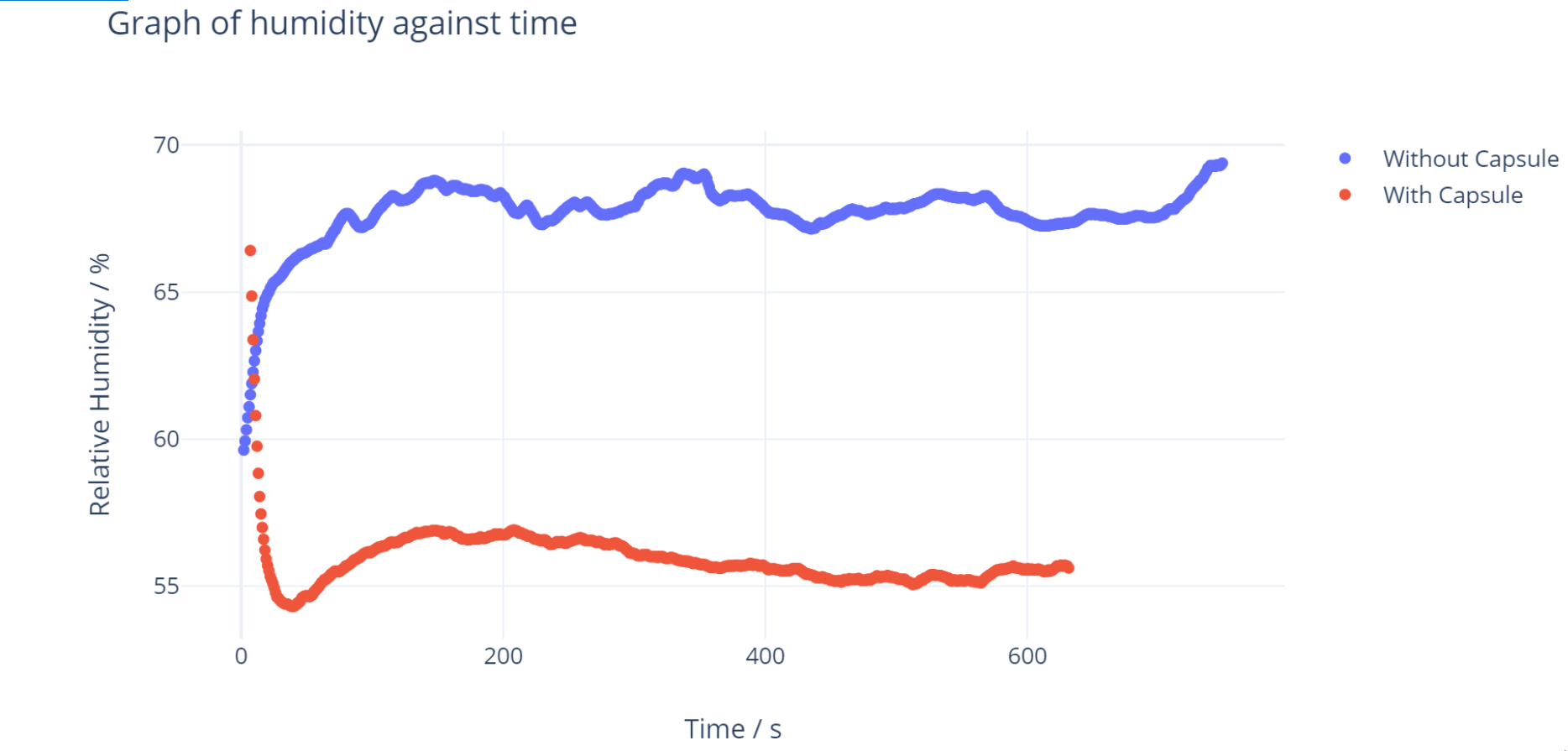
From the graph, it can be seen that silica gel does effectively reduce the humidity levels in the air. A similar test showed the same level of effectiveness, for calcium chloride. However, we decided to use silica gel instead of calcium chloride, as calcium chloride gets clumpy and sticky after absorption of moisture, which reduces air flow significantly.
Testing the effectiveness of water and baking soda in removing Volatile Organic Compounds (VOCs)
Water
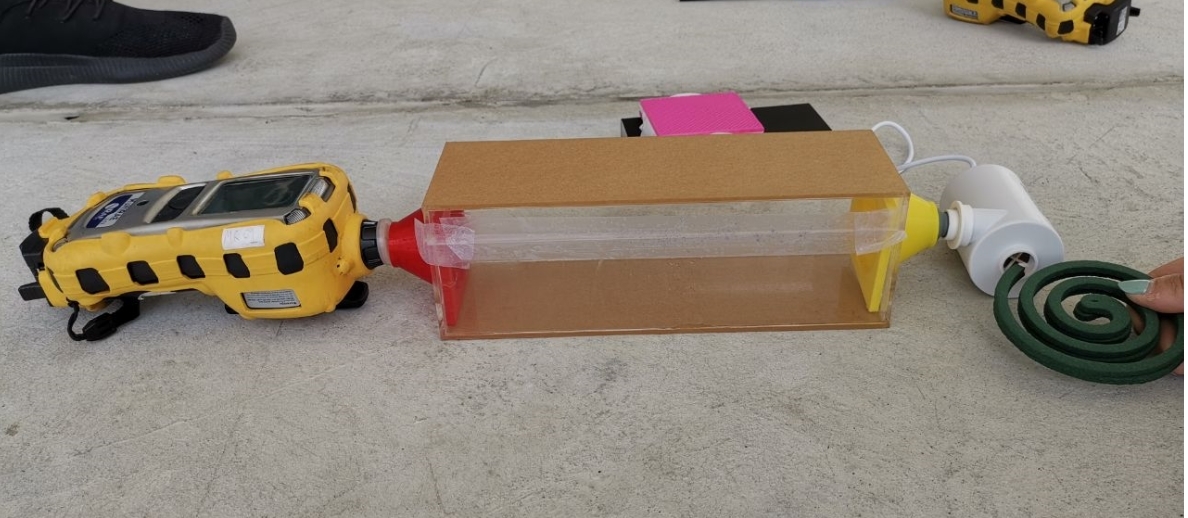
Making use of the fact that the burning of mosquito coils releases VOCs, we burnt several coils to act as a source, placed at the inlet of the air pump. A VOC sensor was placed at the other end of the acrylic box, to measure the VOC levels in the filtered air.

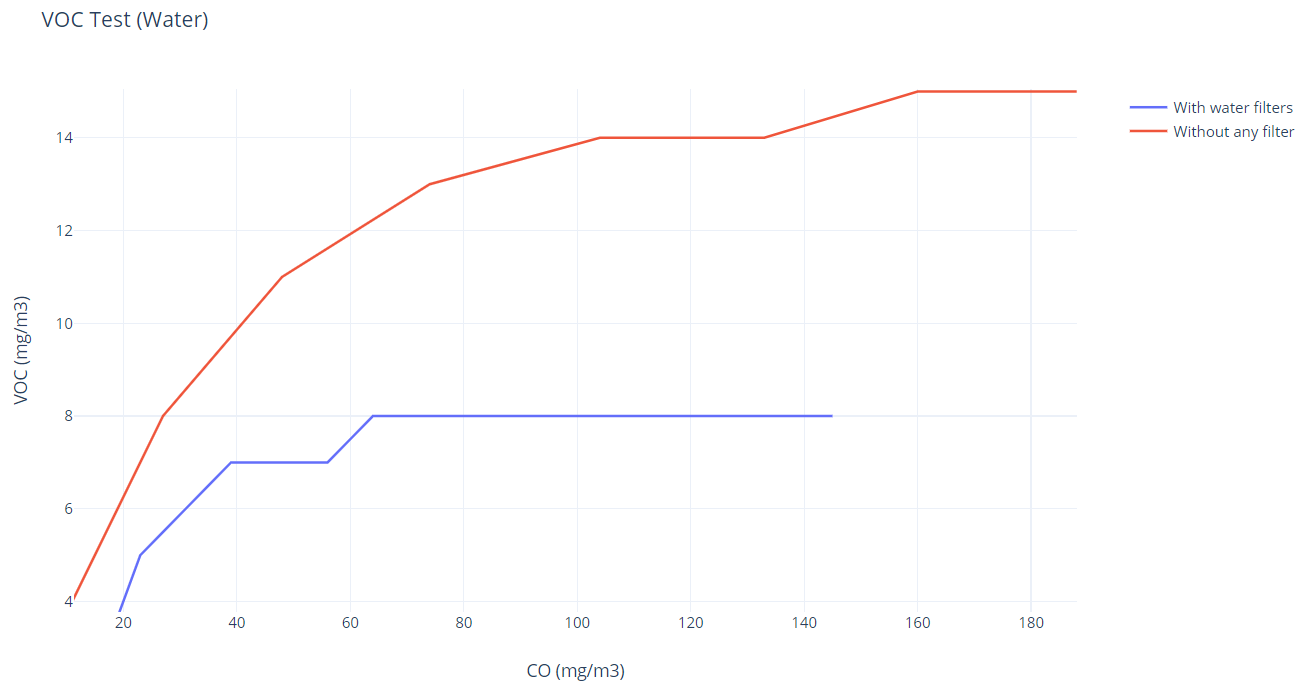
Water filters were added in at time = 8s. From the graph, it can be seen that water is effective in removing VOCs from the air. Hence, we decided to incorporate several pieces of filter paper soaked in water, in the final air filter.
Baking Soda


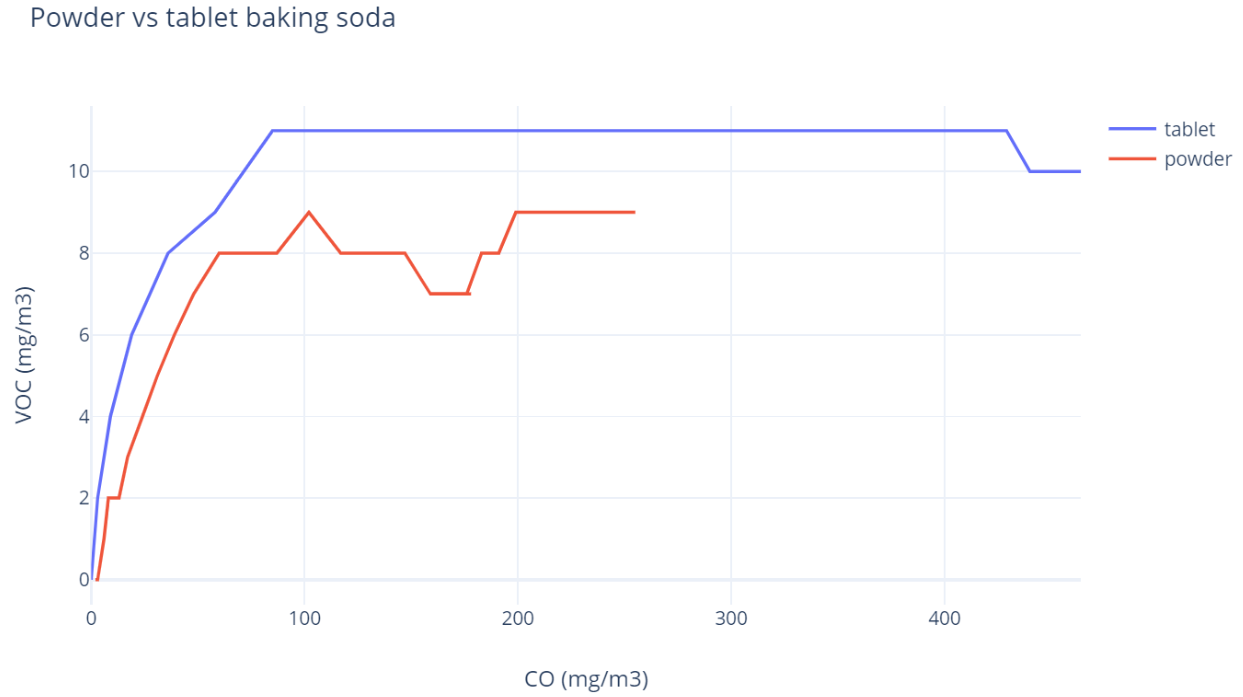
There is a relation between the levels of carbon monoxide (CO) and VOC levels, as they are approximately proportional to one another. Hence, we can use the graphs of VOC against CO to compare the effectiveness of our capsules.
Since there was a greater decrease in VOC levels when using baking soda powder as compared to when using the tablet form, we decided that due to its greater surface area, the powder form of sodium bicarbonate would be more effective in targeting acidic VOCs found in the air. Hence, we decided to make use of baking soda powder, instead of the tablets.
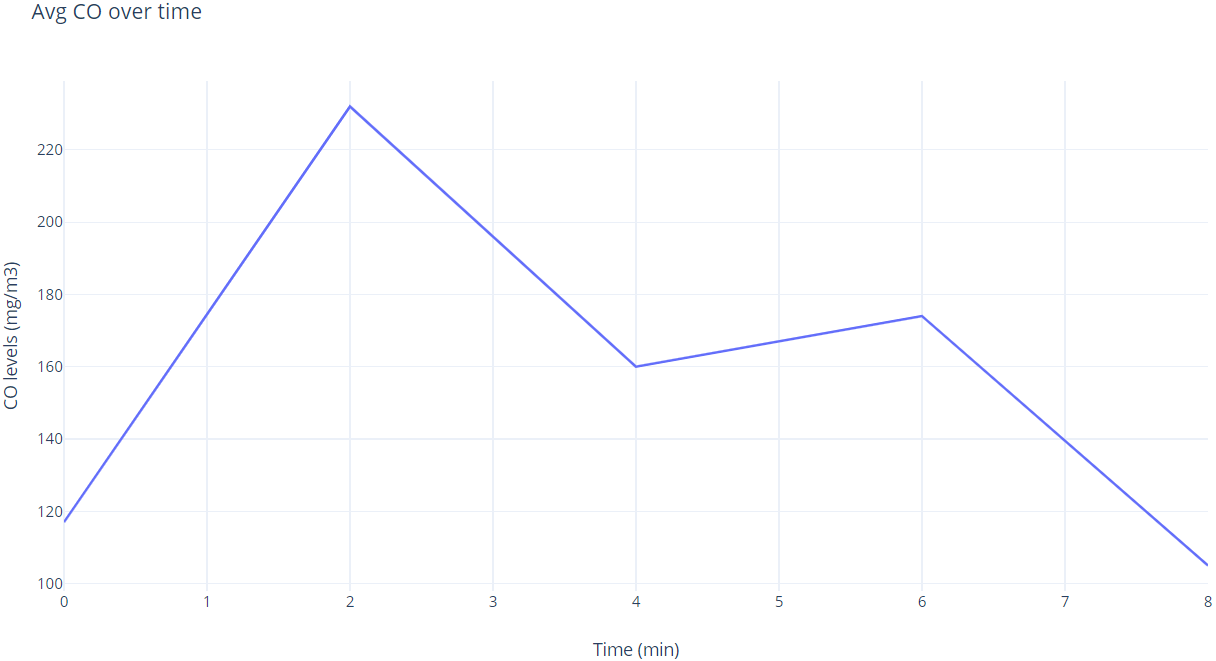
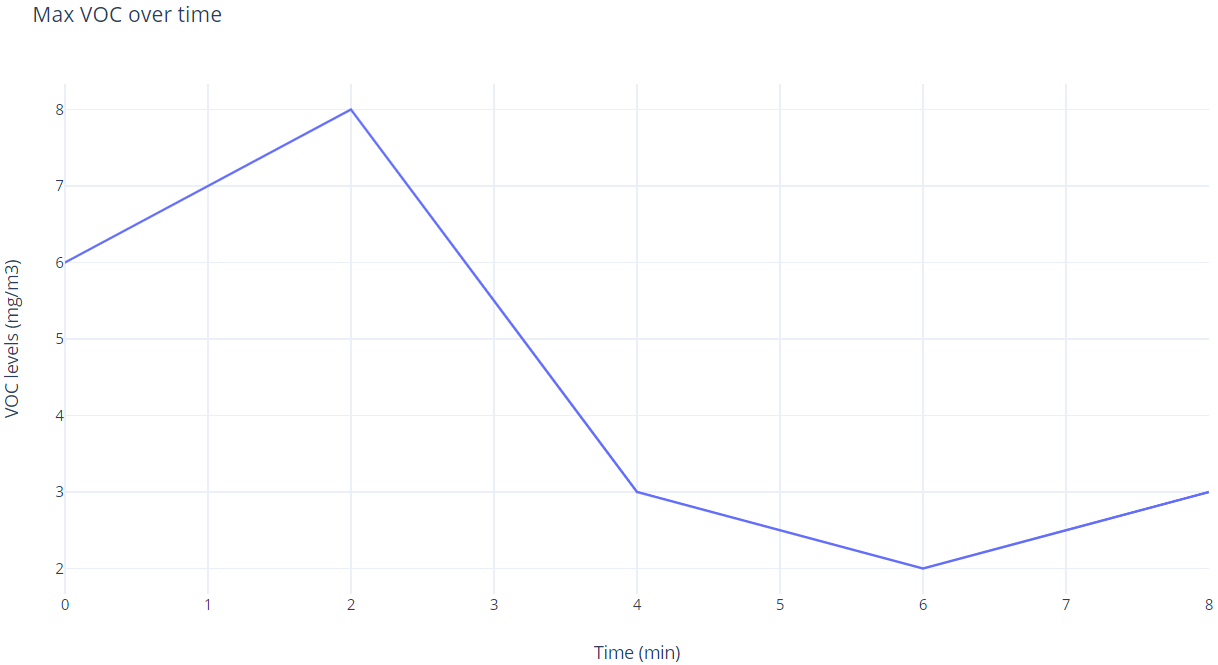
The capsule containing baking soda powder was added in at time = 4 min. From the graph above, it can be seen that baking soda powder alone did effectively reduce the VOC levels from 8 mg/m3 at 2 min to 3 mg/m3 at 8 min. Hence in order to target VOCs, we decided to incorporate a capsule containing only baking soda powder, in the final air filter.
Testing the effectiveness of activated carbon in removing formaldehyde

Liquid formaldehyde was used as a source of formaldehyde vapour, and this was placed at the inlet of the air pump. The formaldehyde detector was placed at the other end of the acrylic box to measure the formaldehyde levels in the filtered air. The detector is linked to an app that displays the formaldehyde level, as well as the amount of particulate matter in the air.
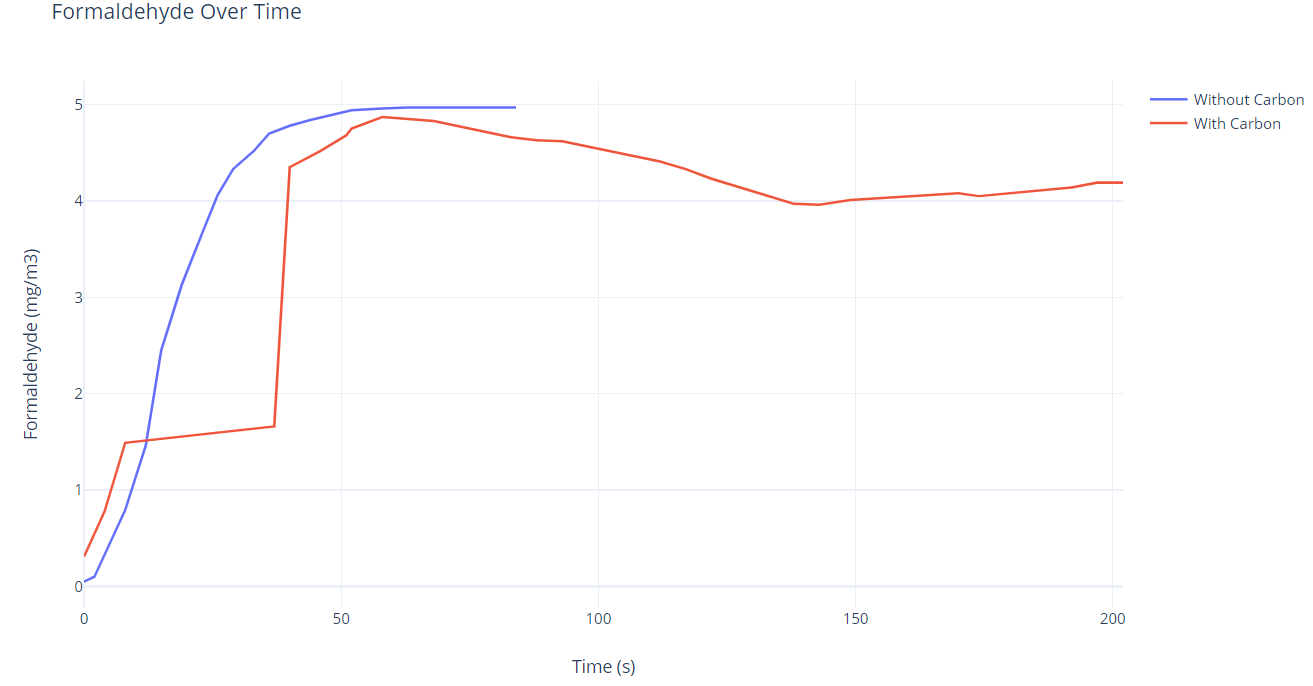
From the graph, it can be seen that activated carbon is effective in reducing the levels of formaldehyde in the air. Hence we decided to include a capsule containing activated carbon pills, in the final air filter.
We conducted an additional test to confirm the effectiveness of the N95 mask in removing particulate matter. During the testing of the effectiveness of activated carbon, an N95 mask was placed on the cover of the capsule and used as a filter.
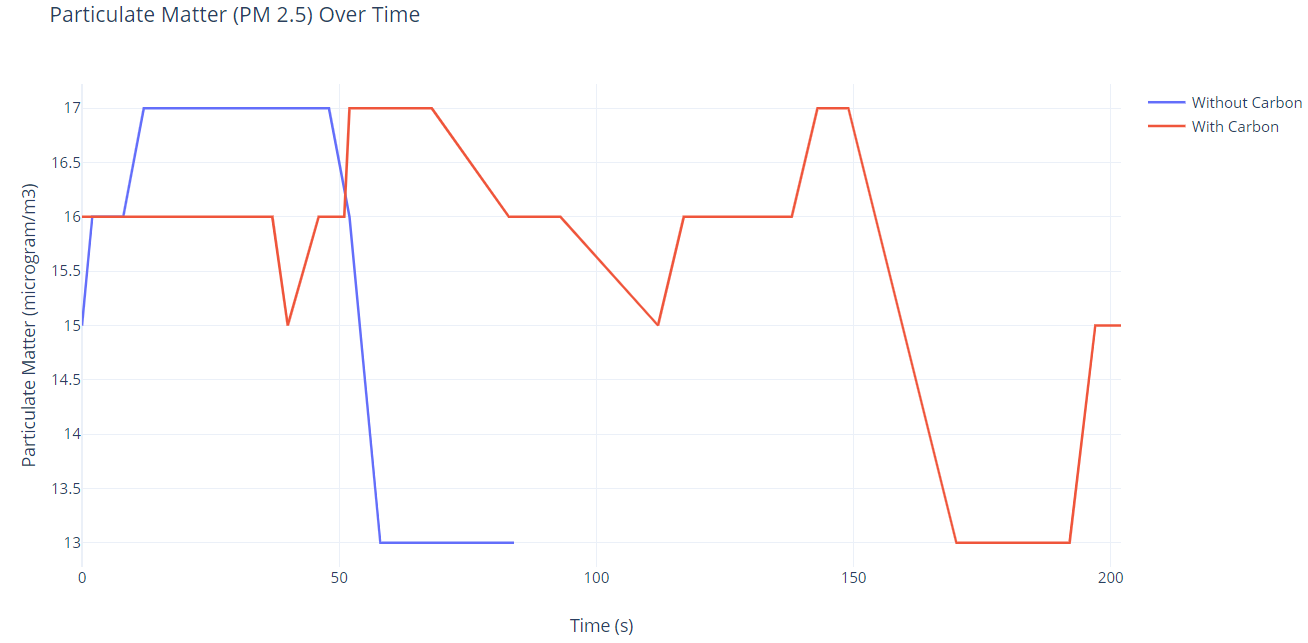
From the graph, it can be seen that the N95 mask was very effective in removing particulate matter in the air. Thus, we decided to incorporate N95 masks on at least one of the capsules, to be placed in the final air filter.
FULL MODEL
Humidity removal test for final design
Initially, we carried out the tests in an open area. We then decided to place the model into a box, to simulate a cupboard setting.
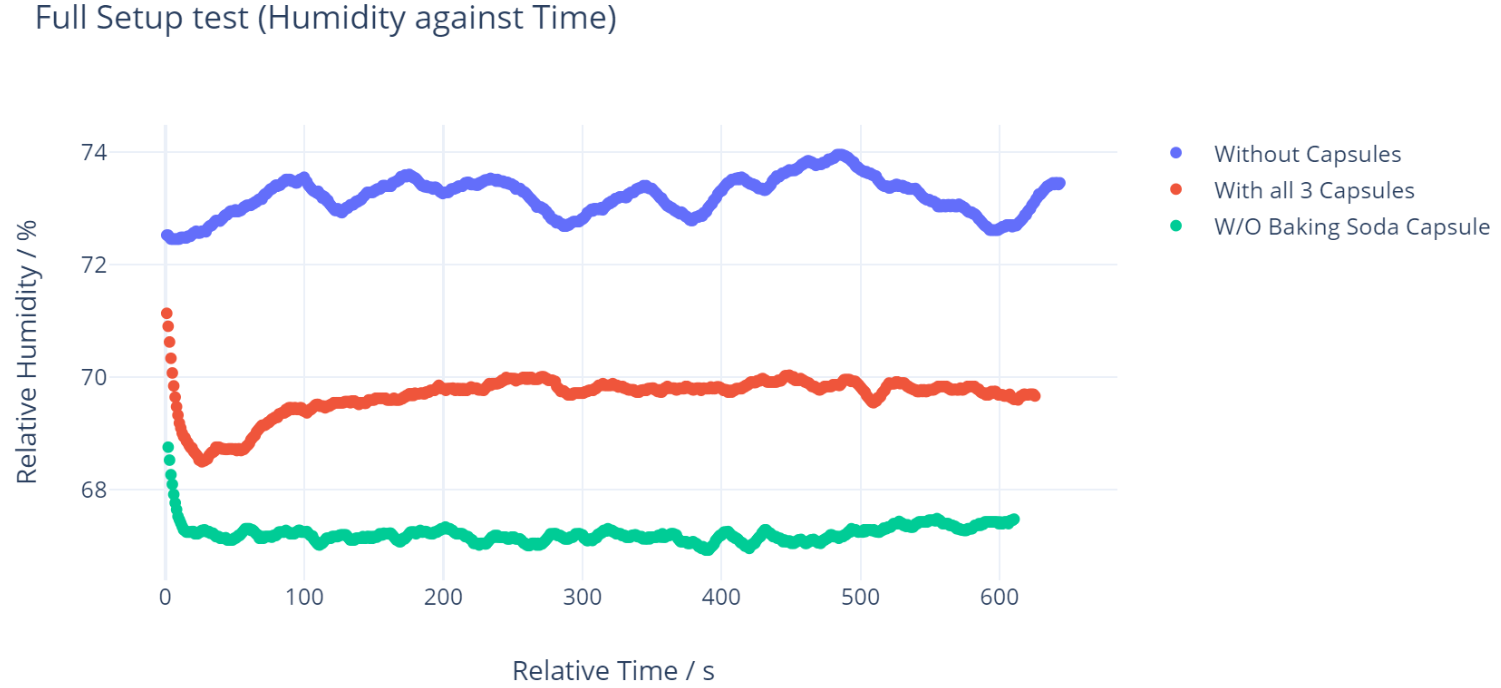

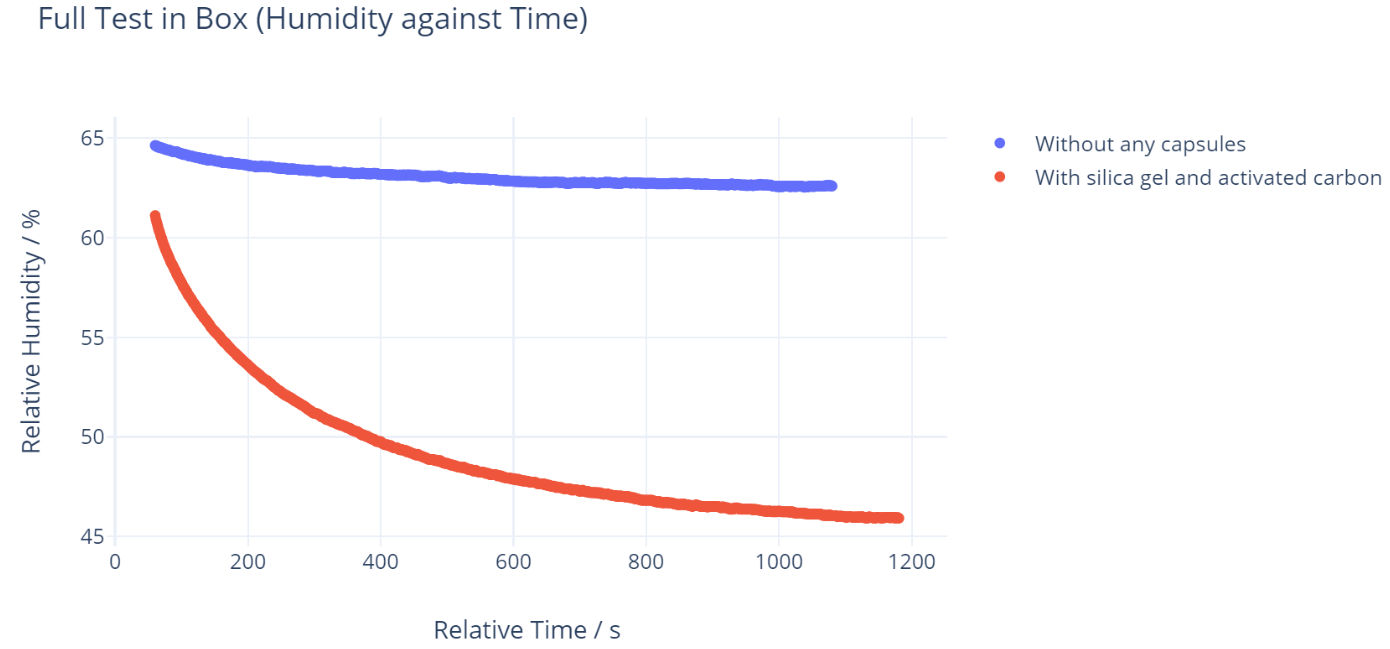
From the graph, it can be seen that in the full, assembled model, the activated carbon in the capsule placed next to the one filled with silica gel did not affect the effectiveness of silica gel in reducing humidity. Hence, the test was successful and this model would work to reduce humidity in wardrobes.
Formaldehyde removal test for final design
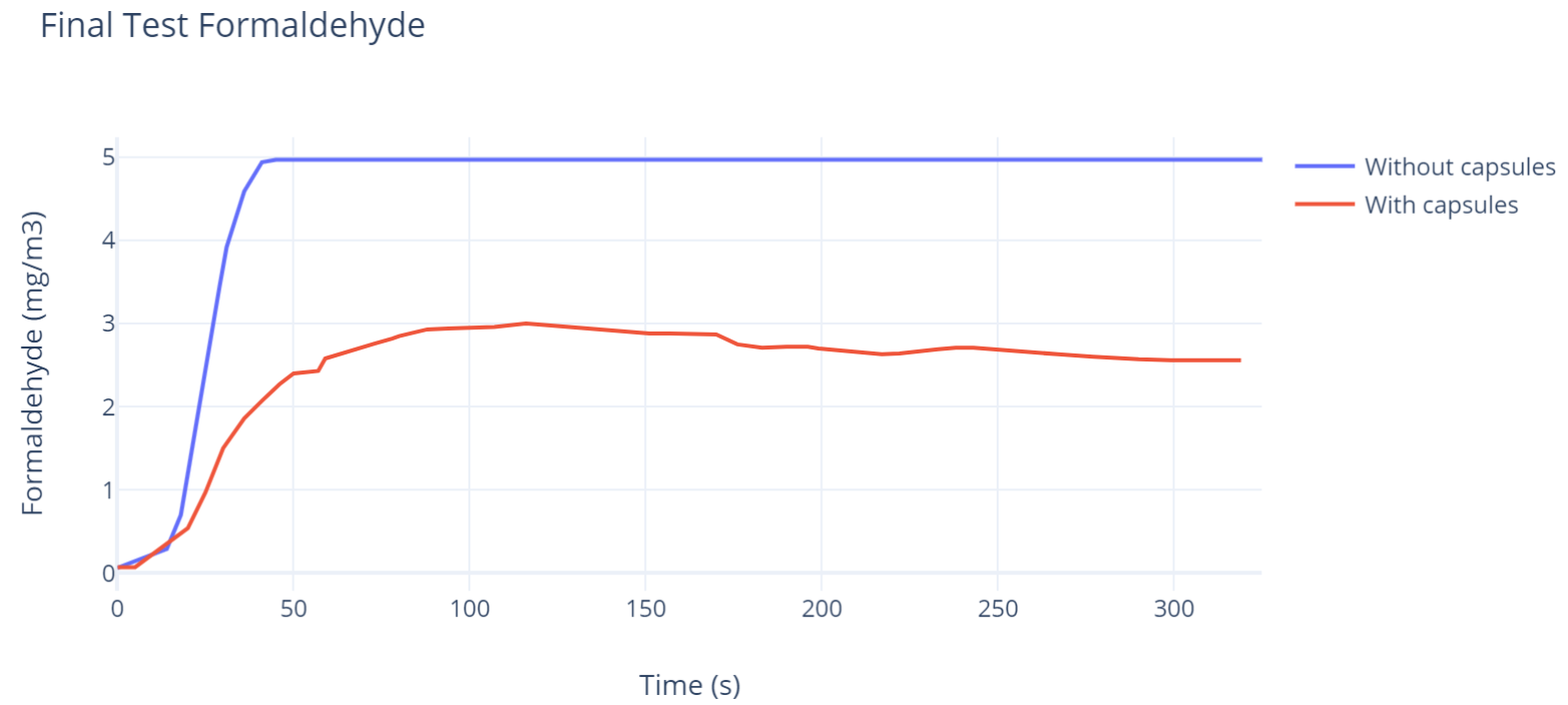
From the graph, it can be seen that the presence of silica gel did not affect the effectiveness of the activated carbon in removing formaldehyde from the air. Hence, the model works and can be used in wardrobes.
Particulate Matter removal test for final design
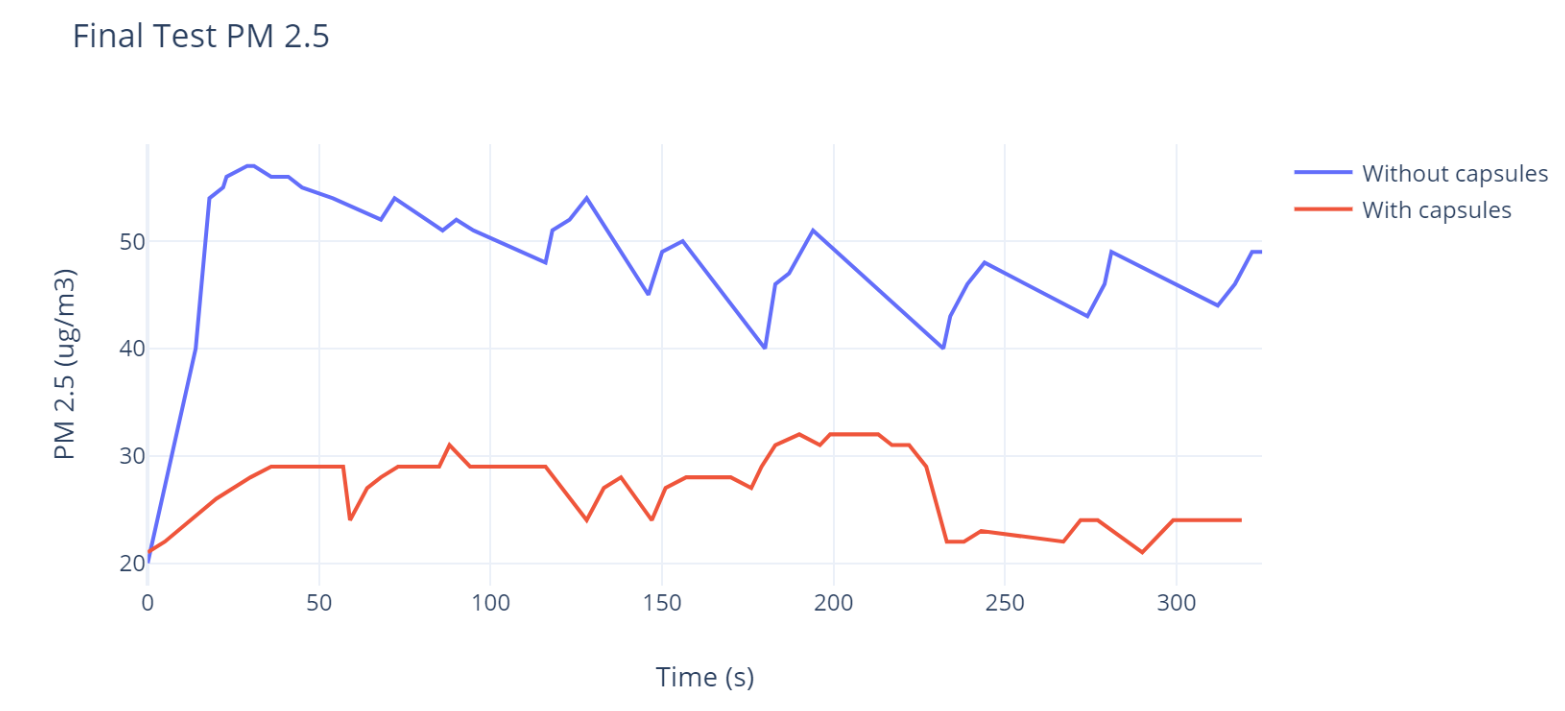
From the graph, it can be seen that the addition of the N95 mask resulted in a significant reduction in levels of particulate matter (PM 2.5) in the air.
VOC removal test for final design
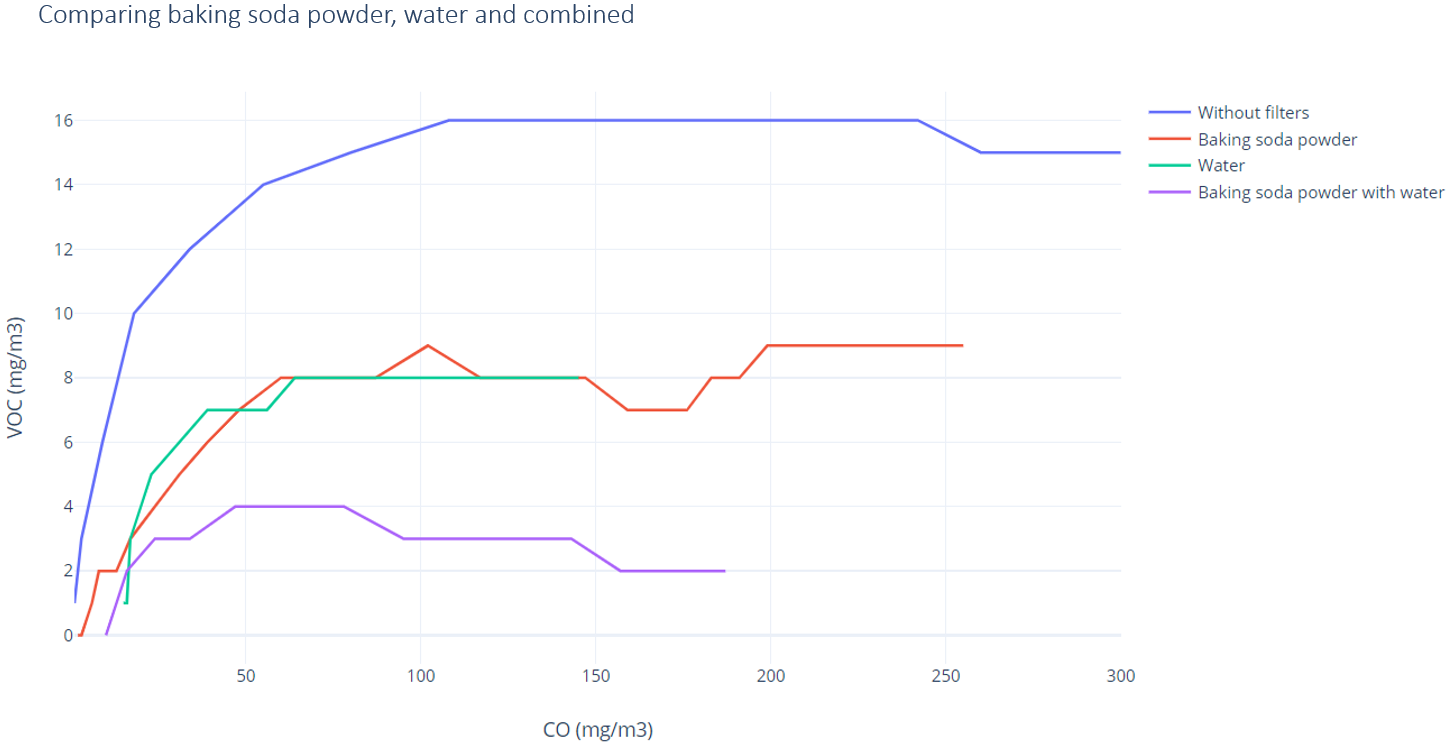
For VOC removal, the baking soda and water filters were tested, both individually and together. From the graph, it can be seen that both baking soda and water are effective in removing VOCs on their own, as there was a decrease in VOC levels from the original (without filter). However, when both filters were placed in the box together, they resulted in an even greater drop in VOC levels hence the test proved successful and both water and baking soda filters can be used together in the full model, to target VOC removal.